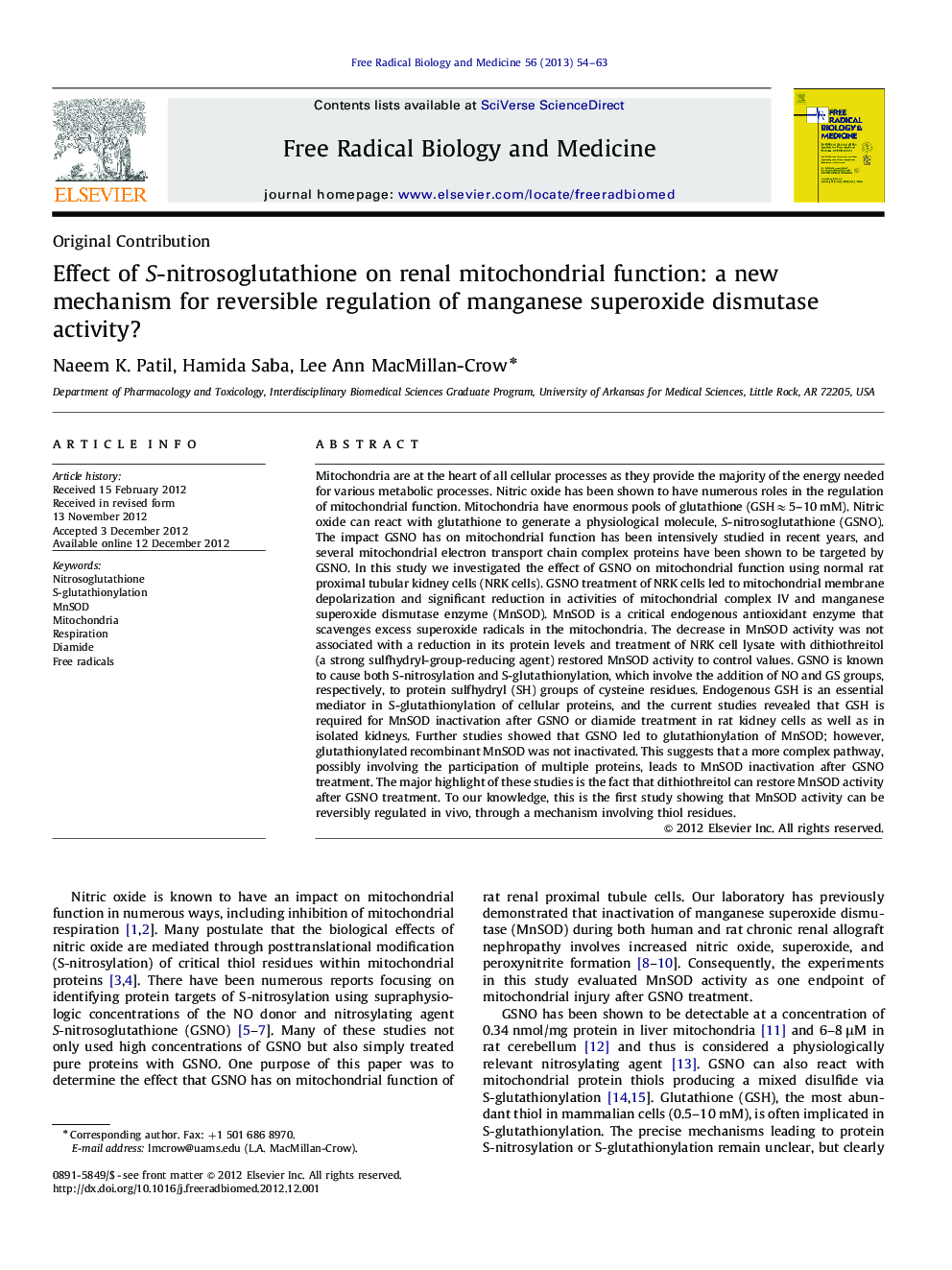| کد مقاله | کد نشریه | سال انتشار | مقاله انگلیسی | نسخه تمام متن |
|---|---|---|---|---|
| 1908563 | 1534986 | 2013 | 10 صفحه PDF | دانلود رایگان |

Mitochondria are at the heart of all cellular processes as they provide the majority of the energy needed for various metabolic processes. Nitric oxide has been shown to have numerous roles in the regulation of mitochondrial function. Mitochondria have enormous pools of glutathione (GSH≈5–10 mM). Nitric oxide can react with glutathione to generate a physiological molecule, S-nitrosoglutathione (GSNO). The impact GSNO has on mitochondrial function has been intensively studied in recent years, and several mitochondrial electron transport chain complex proteins have been shown to be targeted by GSNO. In this study we investigated the effect of GSNO on mitochondrial function using normal rat proximal tubular kidney cells (NRK cells). GSNO treatment of NRK cells led to mitochondrial membrane depolarization and significant reduction in activities of mitochondrial complex IV and manganese superoxide dismutase enzyme (MnSOD). MnSOD is a critical endogenous antioxidant enzyme that scavenges excess superoxide radicals in the mitochondria. The decrease in MnSOD activity was not associated with a reduction in its protein levels and treatment of NRK cell lysate with dithiothreitol (a strong sulfhydryl-group-reducing agent) restored MnSOD activity to control values. GSNO is known to cause both S-nitrosylation and S-glutathionylation, which involve the addition of NO and GS groups, respectively, to protein sulfhydryl (SH) groups of cysteine residues. Endogenous GSH is an essential mediator in S-glutathionylation of cellular proteins, and the current studies revealed that GSH is required for MnSOD inactivation after GSNO or diamide treatment in rat kidney cells as well as in isolated kidneys. Further studies showed that GSNO led to glutathionylation of MnSOD; however, glutathionylated recombinant MnSOD was not inactivated. This suggests that a more complex pathway, possibly involving the participation of multiple proteins, leads to MnSOD inactivation after GSNO treatment. The major highlight of these studies is the fact that dithiothreitol can restore MnSOD activity after GSNO treatment. To our knowledge, this is the first study showing that MnSOD activity can be reversibly regulated in vivo, through a mechanism involving thiol residues.
► S-nitrosoglutathione (GSNO) inhibits MnSOD activity in renal cells.
► Diamide treatment also leads to MnSOD inactivation.
► MnSOD inactivation is reversed with dithiothreitol treatment.
► GSNO leads to glutathionylation of MnSOD, but this does not directly inactivate the enzyme.
Journal: Free Radical Biology and Medicine - Volume 56, March 2013, Pages 54–63